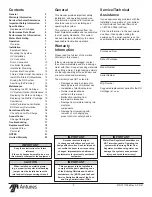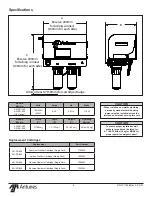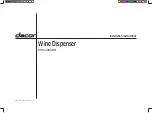
®
P/N 1011596 Rev. A 05/21
13
Rinsing the RO System
The RO System must be rinsed to remove
any air and protective solution before the
system is used.
NOTE:
The RO System must be rinsed
TO DRAIN before use. Rinsing
to drain removes storage
solution and air.
1.
Check that all tubing connections
are firmly seated. Check to see
that the cartridge bowls are fully
engaged. Failure to keep the
cartridge bowls fully engaged
will result in accidental leaks and
flooding.
2.
Make sure the Tank valve is
CLOSED.
3.
Connect tubing to the permeate
outlet and route to a drain. This
tube should be as short as possible
in order not to affect the brine or
product flow rates.
4.
Make sure the blending valve is
completely closed for rinsing.
5.
Open the inlet valve and let water
into the system.
6.
Plug the power cord into an outlet.
The pump will come on and air in
the pre-filters and RO membrane
will come out. Wait 5-10 minutes
until all air has been removed.
7.
Adjust the brine control valve so that
the pressure gauge is 80 psi.
Opening the brine control valve
increases the brine flow rate and
lowers the membrane pressure and
product water flow rate.
8.
Continue to flush the system for
at least one hour, or until the
TDS output is steady and in an
acceptable range.
9.
Use the TDS blending valve located
on the front of the system, to adjust
the TDS of the product water
leaving the system. Use the front-
mounted TDS monitor as a guide.
NOTE:
If you are not going to adjust the
TDS, make sure the blending
valve is completely closed.
The brine flow adjustment
will have to be adjusted each
time the TDS blending valve is
adjusted.
Figure 12.
System Valves
Pressure Gauge
TDS
Blending
Valve
Brine Control
Valve








































